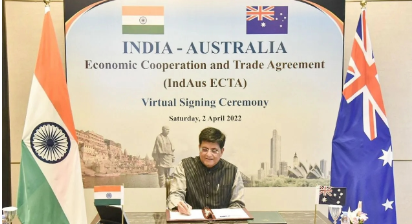
India and Australia have made significant strides in strengthening their economic partnership. Notably, the Economic Cooperation and Trade Agreement (ECTA) signed in September 2021 aims to boost trade by simplifying digital processes and removing tariffs on most goods. This paves the way for the more ambitious Australia-India Comprehensive Economic Cooperation Agreement (AIFTA), targeting India as one of Australia’s top three export markets by 2035.
From 2023 to 2024, India’s exports to Australia rose by 1.6 percent, while imports dropped dramatically by 21.2 percent. Coal and gas, education, gold, and significant exports like tourism, medicine, pearls, and gems characterize India-Australia trade. The ECTA has helped reduce trade barriers, improving India’s export capabilities. Still, the sharp drop in imports from Australia can be attributed to decreased demand for essential commodities like coal and briquettes due to India’s shift towards renewable energy and an ongoing economic slowdown.
As ECTA arrangements eliminate tariffs on over 85 percent of Australian products bound for India and 96 percent of Indian items headed for Australia, expectations are high for significant trade expansion by 2035. Australian service providers will gain expanded access to the Indian market across more than 85 categories, including professional services, healthcare, and education, driving investment in India.
Manufacturing, powered by India’s skilled labor force and Australia’s technical prowess, presents exciting opportunities. Collaborative efforts in modern manufacturing and food processing can lead to more efficient and competitive global supply chains. Technological advancements in digital economies, such as blockchain and digital payments, can further streamline trade between India and Australia, reducing transaction costs and increasing efficiency.